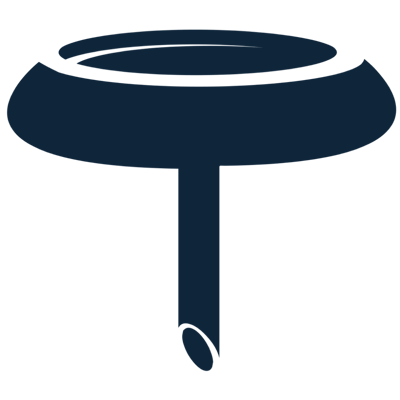 Last week, I was going through some older files when I came across a standard presentation deck from six years ago. Two things struck me as I reviewed that deck. The first was just how much of what we were talking about five years ago still applies today.
Last week, I was going through some older files when I came across a standard presentation deck from six years ago. Two things struck me as I reviewed that deck. The first was just how much of what we were talking about five years ago still applies today.
The second was the amount of time we spent in that presentation on the need to develop a formal lead generation process for businesses desiring growth. While the strategies shared are still applicable, what I found interesting was that, just five years ago, we spent a considerable amount of high-value sales time getting business executives to understand the importance of simply generating leads.
Certainly, there are companies that haven’t adjusted, but even those companies acknowledge the importance and value in designing top-of-funnel strategies to drive higher lead volume. (They’re just still working through their list of excuses.) Today, we rarely spend time talking about the importance of lead generation.
Instead we find, with increasing frequency, that companies committed to serious growth are suffering from a very different problem. They’ve generated the leads, and continue to generate them. Often, they’re generating more leads then they can handle.
For example, two months ago, as I was assessing a company’s demand generation program, I noticed something that at first glance seemed quite perplexing. They were implementing both inbound and outbound tactics. What was odd was that they were generating far more inbound leads than they could manage. So, I asked the head of sales why there were doing so much outbound, when they weren’t fully covering their inbound. His response caused me to dig deeper into the overall lead management puzzle facing companies.
“You know Doug, we pulled back from inbound until about 18 months ago,” he told me. “The problem was that, while inbound was certainly generating qualified leads, they weren’t turning into sales any better than our outbound leads had before we started our inbound efforts. We ended up hiring more reps to meet the lead demand, and that certainly added to our growth rate, but our costs shot up, too. So, I’m not saying that our outbound approach is any better, but I just wasn’t comfortable putting all my eggs in one basket.”
Being the data-driven strategist that I am, the comment led to me to dig deeper and see just how prevalent this problem is. What I discovered surprised me.
Companies that have prioritized lead generation have, by and large, generated (and continue to generate) a large volume of leads. These leads have varying degrees of engagement. They visit the company’s website from time to time. They open emails, occasionally. They download new offers and have even been known to attend a webinar or event. But, they haven’t really been activated. They take value that’s being created, but they give back very little to nothing.
Lead Activation Syndrome

This has resulted in what I call Bulging Funnel Disorder. Companies have enlarged their databases, and for many companies their funnels have actually widened. (They have more leads in their funnel, though still at the top, than they have entering the funnel.) However, they’ve failed to build the mechanisms that enable them to activate leads in sufficient volume to fuel the middle of their funnels.
The problem with Building Funnel Disorder is multiplied by how companies are responding to their “clogged pipes.” The combination of higher costs (driven in large part by increased investments in lead generation efforts & headcount) and the general need for growth have led businesses to stuff more and more “leads” into the clogged funnels. Sales increase because of a combination of higher velocity activity and brute force, but customer acquisition costs rise and growth engines weaken.
The Missing Middle
The promise of modern-day demand generation is that it creates leverage, enabling companies to grow faster while simultaneously lowering customer acquisition costs. The problem appears to be that companies have forgotten that if you want leverage, you need a fulcrum.
The middle of your funnel is the fulcrum for customer acquisition, and it needs the same type of attention that your lead generation and selling strategies are getting. The problem with the middle is that it’s not as sexy and exciting as the top or bottom of your funnel.
It’s also extraordinarily hard to monitor and measure what’s happening in the middle. It’s easy to measure and manage new leads, new sales opportunities, and closed deals. However, the middle of your funnel is fraught with complexity. You can’t solve the middle with a one-process-fits-all-scenarios approach. You must design multiple plays to manage the various situations you’ll confront.
The middle of the funnel is where leads get activated. Leads are activated when they’ve made a decision to engage in conversation and investigation. The issues, problems and/or opportunities are moved from being implicit to explicit.
Now this does not mean that they’re ready to do anything about it, and it certainly doesn’t mean that they’re “sales ready.” This is where the critical mistake is made. The need to “fuel the beast” to “meet the number” leads companies to skip activation and push leads prematurely to the bottom.
The creates two harmful results:
- The middle is where buyer intent is formed and decision criteria are formed. When leads are pushed through this phase too quickly, they never build the foundation to make the type of change a purchase of your product/service represents. This is why an increasing number of sales process end in no decisions/no actions.
- High-pressure actions create negative equity, burn your addressable market, and weaken the funnel, making future growth even more difficult and causing a negative cycle.
The Go-To Middle Funnel Play: The Lead Activation Play
This play is designed to get meaningful conversations started, and has the following objectives:
- Overcome the “let’s talk” hurdle
- Move from passive engagement/awareness to active curiosity
- Create your prospect’s ownership of the problems they have that you solve
- Reduce the hold of the status quo by increasing the perceived pain of not changing
The Lead Activation Play must be:
- Low (and preferably no) risk for the prospect
- Low effort for the prospect (the effort can increase over time)
- Low pressure (this means that the prospect must be able to see an easy exit if they no longer wish to engage)
- High value/High impact
- Customer-focused
- Teachable, focused on the problem and not the solution
- Aligned with your buyer journey progression
Here are some examples of The Lead Activation Play:
At Imagine, we have a number of plays. Here are some of our most effective ones:
- The Online Demand Generation Report Card. With no work on the part of the prospect, we assess a company’s website and give them a score with recommendations.
- The Lead Management Assessment. This is akin to a secret shop where we’ll actually go through the lead generation & management process and report on the process with recommendations.
- The Chatbot Assessment. With the growing popularity of chat, we’ll assess the chat sequence for a company.
Here are a couple of other great Lead Activation Plays from other companies:
- HubSpot’s Website Grader is a great way for a company to see how well their site is set up, and launches the process of understanding what’s needed to compete and win in the digital world we now live in.
- Drift recently launched “What’s Your Response Time?” where you can test your company’s response times to leads. They accompanied this play with a report they completed on the response times of companies they studied. This is a great way to identify issues for your company and fits right into a conversation about the problems that Drift solves.
Add lead activation to your strategic priorities, build a strong middle funnel structure and, suddenly, you’ll widen your funnel, unlock the latent value of your lead generation efforts, and see growth rates increase at a fraction of your current costs.

 Doug Davidoff
Doug Davidoff